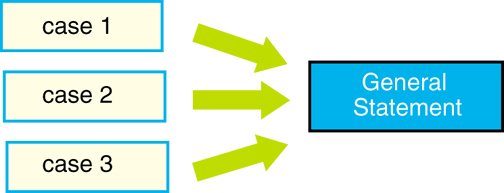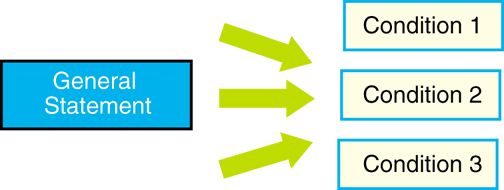 username@email.com
username@email.com
Review the different components of an argument.
Persuasive writing is used by an author who wants to change the opinion of the audience and encourage action of some kind. Persuasive writing should include a stated topic, the author’s opinion, and logical arguments supported by relevant evidence. We’ll address the argument aspect of persuasive writing next.
What Is an Argument?
An argument does not necessarily involve screaming and shouting. In literary terms, an argument should be a fair and rational presentation of issues and ideas presented in the hopes of persuading people to take action or change behavior.
What is Logical Reasoning?
When critically evaluating persuasive writing, consider whether the writer’s reasoning is logical. Two types of logical reasoning are inductive reasoning and deductive reasoning.
Inductive Reasoning
Inductive reasoning involves observing a limited number of cases to reach a general conclusion. Most scientific arguments take the inductive approach, as in the following example:
This polar bear is white and that polar bear is white. All five thousand polar bears I have seen are white. Therefore, all polar bears are white.
Figure 1: Inductive Logic: Moves from the Specific to the General

Deductive Reasoning
A writer takes a general statement and through the process of reasoning applies it to specific situations. Deductive reasoning is most often used in philosophy. We’ll get to an example in just a moment.
Figure 2: Deductive Reasoning: Moves from the General to the Specific

A syllogism is a form of deductive reasoning. It consists of a series of three propositions, with the first two implying the third, which is the conclusion. The following example is a syllogism.
Major premise: All men are mortal.
Minor premise: Brad Pitt is a man.
Conclusion: Therefore, Brad Pitt is mortal.
Modes of Arguments
While some arguments rely on observations, statistics, and reasons for validity, others depend on types of appeals. These types of appeals are found primarily in advertisements, political discussions, the media, and in normal daily discourse.
The following chart provides an overview of the most frequently utilized types of arguments or appeals.
|
Modes of Arguments
|
||
|
Argument Type |
Description |
Example |
| Cause/Effect | An argument based on knowledge of a cause that leads to an effect | If you study for your test, you will earn a good grade. |
| Analogy | An argument that depends on a similarity between two things or states of affairs | Because the French fries on my plate are greasy and salty, the French fries at that other table must also be greasy and salty. |
| Authority | An argument that derives its strength externally from a reputable authority | According to the state senator, 30% of all traffic deaths in rural areas are related to alcohol. |
| Emotion | An argument that attempts to stir the emotions of the audience | Joe Politician wants to hurt the elderly by cutting prescription drug benefits. |
| Character | An argument that attempts to persuade by calling attention to the speaker’s character | Mr. Jones is a great guy, so you should believe what he says. |
Solid evidence is key to an effective persuasive argument. Determining the credibility of evidence involves evaluating whether or not the writer is knowledgeable and honest. This brings us back to the author’s purpose. The purpose of persuasion is to change opinions and encourage people to take action, and as a critical reader, you need to keep the author and his or her goals in mind.
Where’s the Evidence?
Writers use all kinds of evidence to support a premise. Understanding which type of evidence is being used allows a person to determine whether it is valid.
As the following chart indicates, there are three main types of evidence used to support conclusions.
|
Evidence to Support Conclusions
|
||
|
Type of Evidence |
Description |
Example |
| Empirical | Scientific proof is gathered through carefully monitored studies or direct observation. | Studies have shown that 90% of regular smokers began the habit at, or before, age 18. |
| Anecdotal | A single example, observation, or subjective report is used to support a statement. Anecdotal evidence is not scientifically valid. | Eating fried food isn’t harmful. My grandfather ate fried chicken almost every day of his life and lived to be 92. |
| Logical | A structured argument is made based on known statements, events, or conditions. The true answer is the only one that really makes sense or is reasonable. | There was a trail of muddy paw prints all over the new white carpet. Someone must have let the dirty dog inside the house. |
What kind of evidence is used in the following statement?
According to the city manager’s office, one year after instigating a citywide teenage curfew, incidents of teenage car accidents dropped 20% and vandalism in the downtown area dropped 35%.
Review
Consider the following when determining the merit of an argument and its evidence: